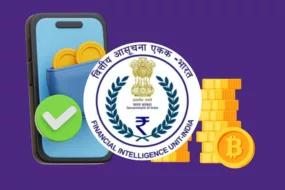
As digital assets are becoming increasingly popular, one cannot overstate the importance of secure and accessible storage for cryptocurrency. This is where blockchain wallets come into play.
A blockchain wallet is a digital tool that allows you to manage, store, and transfer cryptocurrency assets in a secure and decentralized manner.
It’s a fundamental part of the crypto ecosystem that enables users to interact with the blockchain network seamlessly.
In this article, we’ll dive deeper into blockchain wallets, how they work, and why they are essential for anyone with an interest in cryptocurrency.
What Is a Blockchain Wallet?
A blockchain wallet is a digital wallet for managing and storing cryptocurrencies such as Bitcoin, Ethereum, or Litecoin. Its primary purpose is to enable users to send and receive digital currency and keep track of their cryptocurrency holdings.
These are also referred to as cryptocurrency wallets or crypto wallets.
Using a blockchain wallet to send or receive cryptocurrency is similar to using traditional payment gateways like PayPal. Instead of using fiat currency, you use digital currencies like Bitcoin or Ethereum.
Popular blockchain wallets include MetaMask, Mycelium, Electrum, and Trezor. They come in different forms and offer various levels of security and convenience.
Each blockchain wallet varies in terms of numerous factors, such as the level of security, the type of cryptocurrencies it can hold, and the accessibility features. Some wallets may offer advanced security features, such as two-factor authentication. In contrast, others may focus on ease of use and simplicity.
How Does Blockchain Wallet Work?
A blockchain wallet has three basic elements — a private key, a public key, and a wallet address.
1. Private Key
The private key is a unique 256-bit binary number that you use to authenticate and authorize blockchain transactions. It is the password or key that grants you access to your digital assets and resources stored on the blockchain.
Without the private key, you cannot access your data or perform any operations on the blockchain.
Example of a Private Key:
E9873D79C6D87DC0FB6A5778633389F4453213303DA61F20BD67FC233AA33262
2. Public Key
The public key is the identifying factor of your account on the blockchain. It is generated from your private key using complex mathematical algorithms.
The public key is a long series of numbers and letters that you can share publicly without compromising your wallet.
Example of a Public Key:
3048 0241 00C9 18FA CF8D EB2D EFD5 FD37 89B9 E069 EA97 FC20 5E35 F577 EE31 C4FB C6E4 4811 7D86 BC8F BAFA 362F 922B F01B 2F40 C744 2654 C0DD 2881 D673 CA2B 4003 C266 E2CD CB02 0301 0001
3. Wallet Address
The wallet address is a shorter version of your public key that you use to receive and send cryptocurrencies on the blockchain.
Anyone with your wallet address can send cryptocurrency funds to you, but only you can access and manage those funds using your private key. Similarly, you can send funds to others by knowing their wallet addresses.
Example of a Wallet Address:
1BvBMSEYstWetqTFn5Au4m4GFg7xJaNVN2
It is important to note that the security of your cryptocurrency wallet largely depends on the security of your private key. Anyone who gains access to your private key can steal your digital assets without your knowledge or permission.
The irreversible and untraceable nature of blockchain transactions makes it challenging to recover stolen funds, which is why security is a top priority for crypto wallet providers.
Think of it as your email address and password. You give your email address to anyone who wants to email you, but you keep your password secret so no one else can access your account.
Likewise, you can share your public key with anyone who wants to send you cryptocurrency. But, you keep your private key a secret as it’s like your password, which you use to spend your cryptocurrency.
So, always keep your private key secure and never share it with anyone. On the other hand, you can freely share your public key to receive funds into your blockchain wallet.
Why Use Blockchain Wallets?
Blockchain wallets have several key features that make them appealing to users.
1. Security
Instead of relying on intermediaries like banks, blockchain transactions are verified and processed by a computer network that shares the same ledger. This makes the transaction process faster and more secure, as there is no central point of failure.
Also, transactions are cryptographically signed, protecting them from potential hacking attempts or fraudulent activity. This provides peace of mind for users who want to manage their cryptocurrency safely and securely.
2. Accessibility
These wallets can be accessed from various devices, including mobile phones, tablets, and computers, allowing users to manage their cryptocurrency holdings on the go.
3. Privacy
Privacy and identity are also maintained with blockchain wallets.
Unlike traditional bank accounts, which may require personal ID, blockchain wallets can be created and managed anonymously. This is a desirable feature for individuals who value privacy and do not want their financial activity to be tracked.
4. Instant Transactions across Geographies
Blockchain wallets enable fast and borderless transactions without intermediaries like banks. This allows for more efficient and convenient global transactions.
5. Low Transaction Fees
The cost of transferring funds through blockchain wallets is significantly lower than traditional banking systems. This makes it an attractive option for those who frequently transfer funds.
6. Multiple Cryptocurrency Support
Blockchain wallets support multiple cryptocurrencies, making exchanging and converting between them easy. This allows users to have greater flexibility in managing their digital assets.
Types of Blockchain Wallets
There are two main types of blockchain wallets: hot and cold wallets, each with benefits and drawbacks.
1. Hot Wallets
Hot wallets are connected to the internet and can be accessed from any device. They are user-friendly and convenient, making them suitable for day-to-day transactions.
Hot wallets are further divided into web wallets, mobile wallets, and desktop wallets.
1.1 Web Wallets
Web wallets or hosted wallets are hot wallets that store private keys on a web server.
These wallets are free and easily accessible via an internet connection. They also come with features like two-factor authentication and backup and restore options.
But, they are less secure than other types of wallets since they are connected to the internet, making them vulnerable to hacks and other security breaches.
Some examples of web wallets include MyEtherWallet and MetaMask.
1.2 Mobile Wallets
Mobile wallets are designed to be used on a mobile device, such as a smartphone or tablet.
They are convenient and portable, with many being free or low-cost. Many mobile wallets also provide enhanced security features like two-factor authentication and biometric identification. But, users must protect their devices from hacking and malware attacks.
Some examples of mobile wallets include Mycelium and BRD.
1.3 Desktop Wallets
Desktop wallets are installed and used on a desktop computer or laptop.
They offer advanced features like built-in exchanges and portfolio charts, which help users manage their assets more effectively.
Although desktop wallets are generally more secure than web wallets, they are still vulnerable since they are connected to the internet.
Some examples of desktop wallets include Exodus, Electrum, and Bitcoin Core.
2. Cold Wallets
Unlike hot wallets, cold wallets are not connected to the internet and provide higher security. They are similar to a physical vault and can store large amounts of cryptocurrency for extended periods. Cold wallets are less vulnerable to cyber attacks and hacking attempts, making them a popular choice for long-term storage.
Cold wallets are further classified into hardware and paper wallets.
2.1 Hardware Wallets
These are physical devices that store private keys offline and protect them with advanced encryption.
They are considered one of the most secure wallet types, especially for long-term crypto holding. Hardware wallets provide top-level security features. But, they can be expensive, with prices over 100 USD.
Some examples of hardware wallets include Ledger Nano S, Trezor Model One, and KeepKey.
2.2 Paper Wallets
A paper wallet is another form of cold storage for cryptocurrencies. It is a physical piece of paper containing a public address and private key printed as a QR code.
Tips for Choosing a Suitable Blockchain Wallet
When selecting a cryptocurrency wallet, one must consider several factors.
- First, choose a wallet that lets you control and store your private keys locally or offline.
- Also, look for a wallet with a backup seed phrase and security features like passwords.
- Choosing a wallet with an active development community that maintains and improves the software is also essential.
- The wallet should be easy to use and compatible with your preferred operating system(s).
- Choose a wallet that doesn’t require verification of KYC (know your customer).
Conclusion
Blockchain wallets provide a secure and convenient way to manage cryptocurrency assets.
They have revolutionized how people interact with digital currencies by providing a decentralized solution that ensures the safety of assets.
With the continued growth of the cryptocurrency industry, the importance of blockchain wallets will only increase. It’s essential to choose a reputable wallet provider, take necessary security measures, and keep private keys safe.
FAQs
1. What is a Blockchain Wallet, and why is it necessary?
A blockchain wallet is a software application that allows users to store, manage, and transfer their cryptocurrency assets. It is necessary because it provides a secure and convenient way for users to interact with the blockchain network and their digital assets.
Sending, receiving, or managing cryptocurrency assets would be challenging without a blockchain wallet.
2. Are blockchain wallets secure?
Blockchain wallets can be secure if used correctly. They use advanced encryption algorithms and private keys to secure your funds.
But, users must be careful and keep their private keys safe as they are the only way to access their funds. Hackers can access a wallet if they obtain a private key. Thus, using a reputable wallet provider and taking appropriate security measures is essential.
3. How do I transfer cryptocurrency from one wallet to another?
Below are the steps for transferring cryptocurrencies from one wallet to another.
- You need to initiate a transaction on the blockchain network to transfer cryptocurrency from one wallet to another.
- You must enter the recipient’s wallet address and the amount you want to send.
- The transaction is verified and recorded on the blockchain network.
- Once confirmed, the recipient’s wallet will reflect the new balance.
It’s important to ensure you have the correct wallet address and network selected to avoid losing funds.
4. Can I use the same wallet for multiple cryptocurrencies?
Some wallets support multiple cryptocurrencies, while others only support one type. You need to check the wallet’s supported assets before using it.
If a wallet supports multiple cryptocurrencies, you can store, manage, and transfer all your assets in one place. But it’s crucial to remember that each cryptocurrency has a unique wallet address, and you should not send assets to the wrong address.





